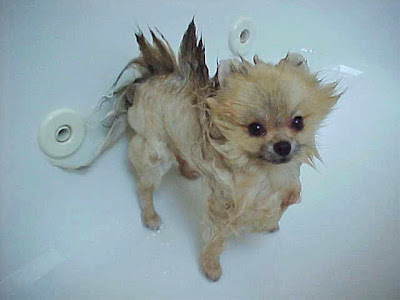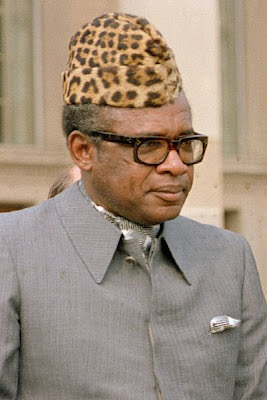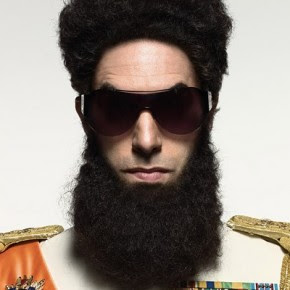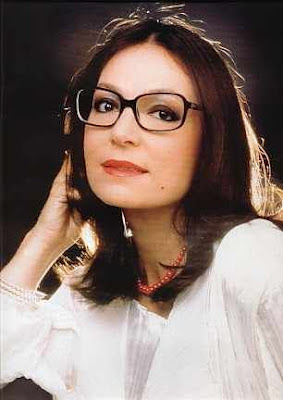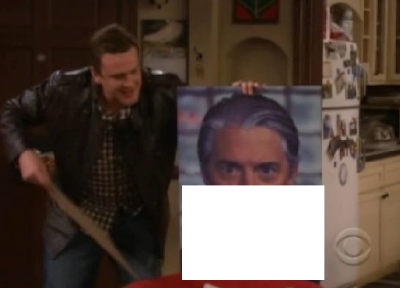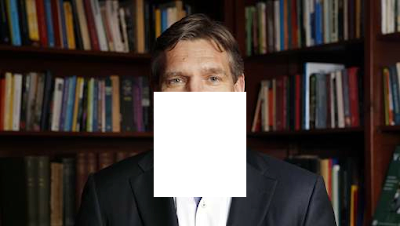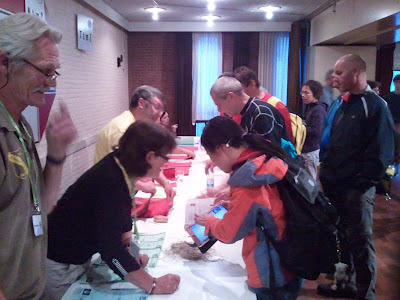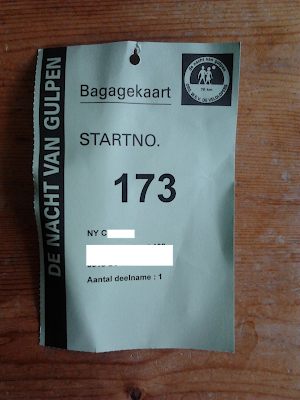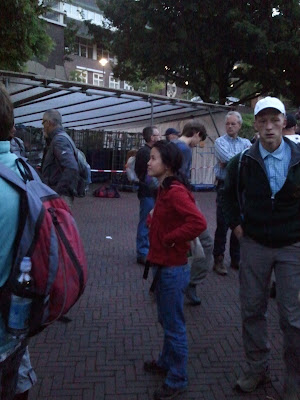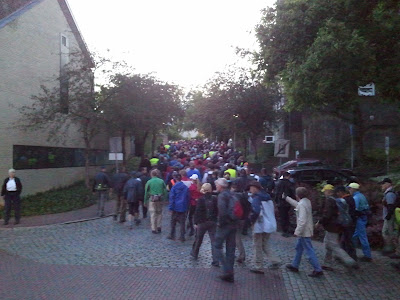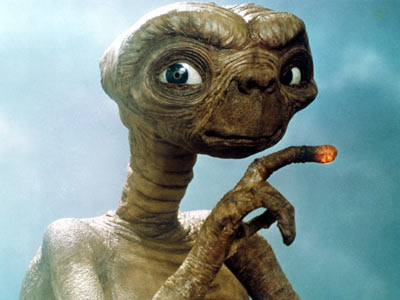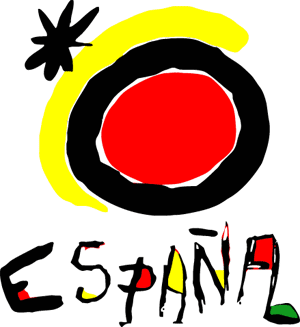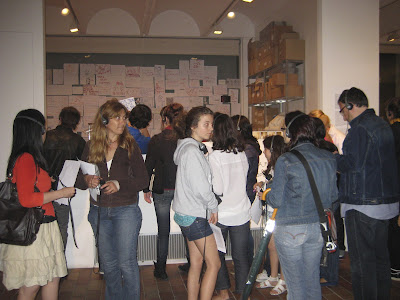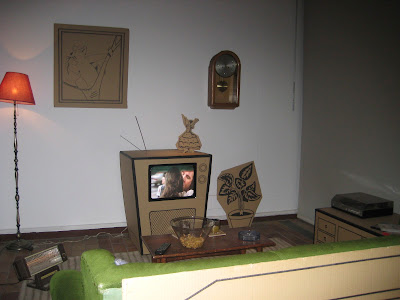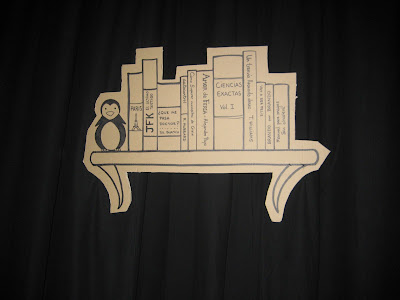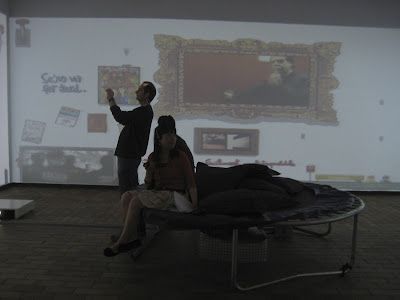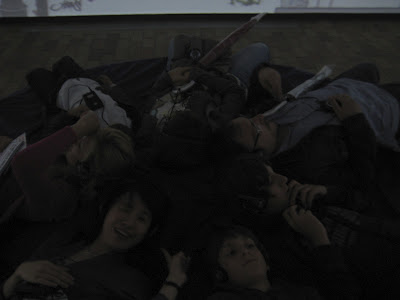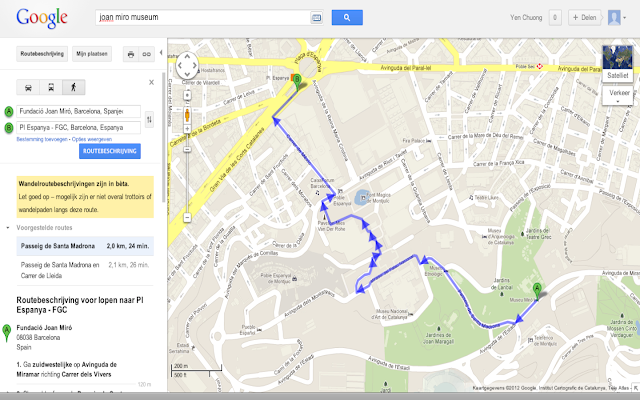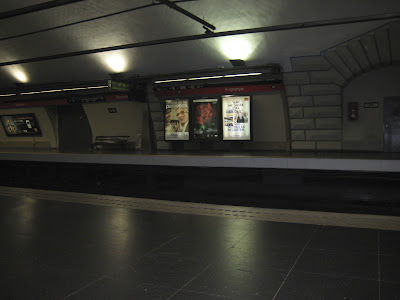Luke 12: 23 King James 2000 Bible
Want het leven is meer dan voedsel en het lichaam meer dan kleding.
Lukas 12:23
It's the time of the season for some last-minute christmas shopping. I like to procrastinate gift shopping because I detest shopping, as usual. It took me two months to find the perfect gifts. I think I might have lost some lifeblood during my search. But since it is the season of giving it's only fair if I give back when I received so much from others this year, not only materially but also empirical. I'm quite picky myself but I have a legitimate reason. I rather don't want to 'sponsor' companies who violate human rights. And I'm trying to ban cheap produced clothing containing chemicals which are slowly poisoning our bodies and the environment.
Greenpeace started a campaign to expose the dirty little secret from the fashion industry, using hazardous chemicals and dyes to make our clothes. These chemicals end up remaining in many clothing we buy and in the rivers near the factories where the clothes are produced.
Greenpeace is een campagne tegen de kledingindustrie gestart met als doel, de ogen van de consument te openen voor het gif dat ze gebruiken om onze kleding te produceren en te kleuren. Resten van het gif beland in onze kleding en in het drinkwater.
I don't want to sound like a hypocrite, I own some clothing from companies who are not 'clean'. But this made me think about where my clothing comes from and what they are made of. I've joined the Greenpeace Netherlands 'Fashion against Toxics' challenge, I'm not going to buy new clothes for three months. The challenge started December 1st. I was being a bit hardcore at the beginning because I didn't know I was allowed to buy second-hand. But I'm going strong. I haven't bought any panties yet and I'm actually in desperately need of them. I don't spend a lot of time at one place so my panties are spread around the country. In some kind of way this make it seem like I sleep around a lot.:/
Ik maak mij ook schuldig aan het kopen van 'vuile' kleding. Maar het heeft mij wel aan het denken gezet. Waar komt mijn kleding vandaan en waar is mijn kleding van gemaakt. Op 1 december jongstleden is Greenpeace Nederland met de 'Fashion against Toxics' uitdaging begonnen, 3 maanden geen nieuwe kleding kopen. Ik doe sinds het begin mee. Sinds een week heb ik wat meer ruimte om te ademen want tweedehands kleding kopen is toegestaan. Ik heb wel een probleempje, mijn voorraad ondergoed langzamerhand op. Ik reis er op los dus mijn ondergoed ligt verspreid over het hele land. Ik leef trouwens geen losbandig bestaan, ik kan het uitleggen.:/
Though the challenge is noble, Greenpeace leaves out some critical notions. First of all we have to accept globalization is a fact. We can't just stop buying clothing from developing countries. Buying second-hand only is not the solution, second-hand shops don't produce any clothing. We are too 'addicted' to cheap clothing. Just a small group of people can afford clothing made in first world countries. By banning clothing from developing countries we also take away income from people who earn a small percentage of what we earn. And secondly there is another secret, a lot of cheap second-hand clothing contain acrylic fiber. Every time you wash clothing with acrylic fiber, tiny bits of fiber ends up in our drinking water. Those fibers are like like razors, eventually life in the water.
De campagne is nobel, maar Greenpeace vergeet een aantal punten te vermelden. Door het niet kopen van kleding, treffen wij niet de kledingindustrie maar de werknemers in de derdewereldlanden. Zij zullen de eersten zijn die ontslagen worden als er minder omzet wordt gemaakt. Trouwens, we zijn als Nederland veel te verslaafd geraakt aan goedkope kleding. Wij kopen meer kleding dan wij echt nodig hebben. Eis eerlijke en milieuvriendelijke kleding van de winkels waar je winkelt. Je hebt als consument meer zeggenschap dan je denkt. Daarnaast is alleen maar tweedehands kleding kopen niet de oplossing. In goedkope kleding zit acryl. Acryl is op zich niet giftig elke keer als je kleding van acryl wast, komt er elke keer stukjes vezel in ons drinkwater. Deze stukjes vezel zijn net als kleine scheermesje voor vissen. En je kunt je wel indenken hoe het afloopt met de vissen als zij dit keer inslikken.
Companies like C&A are known for treating their employees very badly and they probably use toxic chemicals.
C&A staat erom bekend dat ze werknemers in derdewereldlanden exploiteren. Waarschijnlijk gebruiken ze ook giftige stoffen om hun kleding te produceren.
Greenpeace started a campaign to expose the dirty little secret from the fashion industry, using hazardous chemicals and dyes to make our clothes. These chemicals end up remaining in many clothing we buy and in the rivers near the factories where the clothes are produced.
Greenpeace is een campagne tegen de kledingindustrie gestart met als doel, de ogen van de consument te openen voor het gif dat ze gebruiken om onze kleding te produceren en te kleuren. Resten van het gif beland in onze kleding en in het drinkwater.
I don't want to sound like a hypocrite, I own some clothing from companies who are not 'clean'. But this made me think about where my clothing comes from and what they are made of. I've joined the Greenpeace Netherlands 'Fashion against Toxics' challenge, I'm not going to buy new clothes for three months. The challenge started December 1st. I was being a bit hardcore at the beginning because I didn't know I was allowed to buy second-hand. But I'm going strong. I haven't bought any panties yet and I'm actually in desperately need of them. I don't spend a lot of time at one place so my panties are spread around the country. In some kind of way this make it seem like I sleep around a lot.:/
Ik maak mij ook schuldig aan het kopen van 'vuile' kleding. Maar het heeft mij wel aan het denken gezet. Waar komt mijn kleding vandaan en waar is mijn kleding van gemaakt. Op 1 december jongstleden is Greenpeace Nederland met de 'Fashion against Toxics' uitdaging begonnen, 3 maanden geen nieuwe kleding kopen. Ik doe sinds het begin mee. Sinds een week heb ik wat meer ruimte om te ademen want tweedehands kleding kopen is toegestaan. Ik heb wel een probleempje, mijn voorraad ondergoed langzamerhand op. Ik reis er op los dus mijn ondergoed ligt verspreid over het hele land. Ik leef trouwens geen losbandig bestaan, ik kan het uitleggen.:/
Though the challenge is noble, Greenpeace leaves out some critical notions. First of all we have to accept globalization is a fact. We can't just stop buying clothing from developing countries. Buying second-hand only is not the solution, second-hand shops don't produce any clothing. We are too 'addicted' to cheap clothing. Just a small group of people can afford clothing made in first world countries. By banning clothing from developing countries we also take away income from people who earn a small percentage of what we earn. And secondly there is another secret, a lot of cheap second-hand clothing contain acrylic fiber. Every time you wash clothing with acrylic fiber, tiny bits of fiber ends up in our drinking water. Those fibers are like like razors, eventually life in the water.
De campagne is nobel, maar Greenpeace vergeet een aantal punten te vermelden. Door het niet kopen van kleding, treffen wij niet de kledingindustrie maar de werknemers in de derdewereldlanden. Zij zullen de eersten zijn die ontslagen worden als er minder omzet wordt gemaakt. Trouwens, we zijn als Nederland veel te verslaafd geraakt aan goedkope kleding. Wij kopen meer kleding dan wij echt nodig hebben. Eis eerlijke en milieuvriendelijke kleding van de winkels waar je winkelt. Je hebt als consument meer zeggenschap dan je denkt. Daarnaast is alleen maar tweedehands kleding kopen niet de oplossing. In goedkope kleding zit acryl. Acryl is op zich niet giftig elke keer als je kleding van acryl wast, komt er elke keer stukjes vezel in ons drinkwater. Deze stukjes vezel zijn net als kleine scheermesje voor vissen. En je kunt je wel indenken hoe het afloopt met de vissen als zij dit keer inslikken.
Companies like C&A are known for treating their employees very badly and they probably use toxic chemicals.
C&A staat erom bekend dat ze werknemers in derdewereldlanden exploiteren. Waarschijnlijk gebruiken ze ook giftige stoffen om hun kleding te produceren.
 |
| This piece of cloth costs € 49 at C&A. Voor dit poetsdoekje durft C&A € 49,- te vragen. |
I do have a little problem. I need a 'new' winter coat. I gave away my winter coat last summer cause I thought I would buy a new one. The thing is I'm wearing a very old winter coat now. I don't really like this one but it keeps me warm. The coat is really worn out, I keep on loosing some of the buttons. And the inside of the coat looks like a pomeranian.
Waar ik naar uitkijk is een mooie winterjas. Ik heb mijn oude winterjas weggegeven. Op het moment draag ik een winterjas waarvan ik het bestaan vergeten was. Hij valt langzamerhand uit elkaar. En ik ben er ook niet dol op omdat ik door de binnenvoering op een keeshond lijkt.
And when it rains I look like a wet pomeranian.:(
En wanneer het regent, lijk ik op een natte keeshond.:(
Check for more information on the 'Fashion against Toxics' Facebook page. https://www.facebook.com/FashionAgainstToxics
Kijk voor meer informatie op de Facebook pagina van 'Fashion against Toxics'. https://www.facebook.com/FashionAgainstToxics

